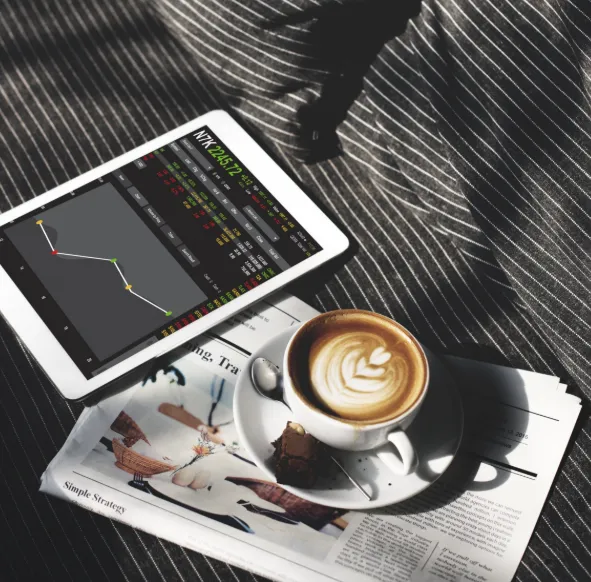Understanding the factors that influence the stock market can be complex, but once you break down macroeconomic influences, it becomes much easier to make informed investment decisions. Macroeconomic factors, such as inflation, interest rates, and GDP growth, play a significant role in shaping market trends and investment outcomes.
In this article, we’ll explore how these major economic elements impact stock analysis and investment strategies, giving you the tools to navigate market fluctuations.
What Are Macroeconomic Factors and Their Role in Stock Analysis?
Macroeconomic factors refer to large-scale economic indicators that influence the broader economic environment in which businesses operate. These elements, which include GDP growth rates, inflation, unemployment, and interest rates, can have profound effects on stock market performance.
By understanding these factors, investors can gain insights into which sectors may thrive and which could face challenges. This knowledge is key for making sound investment decisions.
1. Inflation: The Rising Cost of Goods
Inflation, the rate at which prices for goods and services increase, erodes purchasing power and can have a direct impact on the stock market. When inflation rises, the cost of living increases, reducing consumers’ ability to spend and lowering corporate profits. This can lead to a decline in stock prices, especially for companies that rely on fixed-income streams, such as utilities.
However, mild inflation can signal a healthy economy, indicating that demand is strong and businesses can raise prices. Industries like real estate may benefit from moderate inflation, as property values and rents tend to rise.
2. Interest Rates: The Price of Borrowing
Interest rates, controlled by the central bank, directly affect the cost of borrowing. When rates are low, borrowing becomes cheaper, encouraging consumer spending and business investment. This can drive stock prices up as companies expand and consumer demand rises.
On the flip side, higher interest rates make borrowing more expensive, slowing down both business investments and consumer spending. This often leads to a drop in stock prices, as businesses face higher costs and slower growth. Additionally, rising rates increase mortgage costs, potentially affecting housing market demand and home sales.
3. GDP Growth: Economic Health Indicator
Gross Domestic Product (GDP) growth reflects the overall health of the economy. A strong GDP growth rate typically signifies a thriving economy, with businesses growing, jobs being created, and consumer spending on the rise. As a result, stock prices usually rise because companies are earning more and the investment outlook is positive.
However, a slowdown in GDP growth can signal economic trouble. Low or negative GDP growth typically leads to lower corporate earnings, which can cause stock prices to fall as investors become more cautious.
4. Unemployment Rates: The Workforce’s Impact
Low unemployment is generally a sign of a healthy economy. When most people are employed, they are likely spending their earnings, which boosts demand for goods and services and benefits companies. This is particularly true for sectors like retail and hospitality, where consumer spending is a key driver.
Conversely, high unemployment suggests economic distress. Fewer people working means less consumer spending, leading to reduced company profits and lower stock prices.
5. Fiscal and Monetary Policies: Government’s Economic Tools
Government fiscal and monetary policies have a direct impact on the economy and stock market. Fiscal policies, such as government spending and tax cuts, can stimulate economic activity by providing people with more money to spend. This, in turn, can lead to higher stock prices as demand for goods and services increases.
Monetary policy, which includes adjustments to interest rates and money supply, can also influence the economy. Lowering interest rates can boost spending and investment, while raising rates can slow down the economy by making borrowing more expensive.
6. Political Stability and Economic Policy
Political stability and economic policy are essential for creating a favorable investment environment. Stable governments can implement effective policies that encourage growth, while political uncertainty can deter investment and cause market volatility.
Changes in trade policies or tariffs can also affect industries differently. For example, tariffs on imports can increase costs for companies that rely on foreign goods, reducing profits and stock prices.
7. Crude Oil Prices: The Global Economic Driver
Crude oil prices are a major factor in the global economy. As oil is essential to various industries, fluctuations in oil prices can influence production costs. Rising oil prices often lead to higher production costs for companies, especially in industries like transportation, manufacturing, and retail.
Higher oil prices can squeeze profit margins, leading to a decline in stock prices, particularly for industries with high energy consumption.
Practical Tips for Investors
Here are a few tips to help you navigate the stock market with a keen eye on macroeconomic factors:
- Stay Informed: Keep track of key economic indicators, such as GDP growth, inflation rates, and unemployment figures, to understand how the economy is performing.
- Use Economic Calendars: These calendars track important economic reports and data releases, helping you anticipate market movements.
- Diversify Your Portfolio: Different sectors react differently to macroeconomic changes. Diversification can help mitigate risks and balance your portfolio.
- Consult Experts: Macroeconomic analysis can be complex. Consider seeking advice from financial professionals to guide your investment decisions.
Conclusion
Understanding the impact of macroeconomic factors is essential for making informed investment decisions. By keeping an eye on inflation, interest rates, GDP growth, and other key indicators, you can better predict market movements and choose investments that align with broader economic trends. By integrating these factors into your investment strategy, you’ll be better positioned to navigate the ups and downs of the stock market and maximize your returns over the long term.













